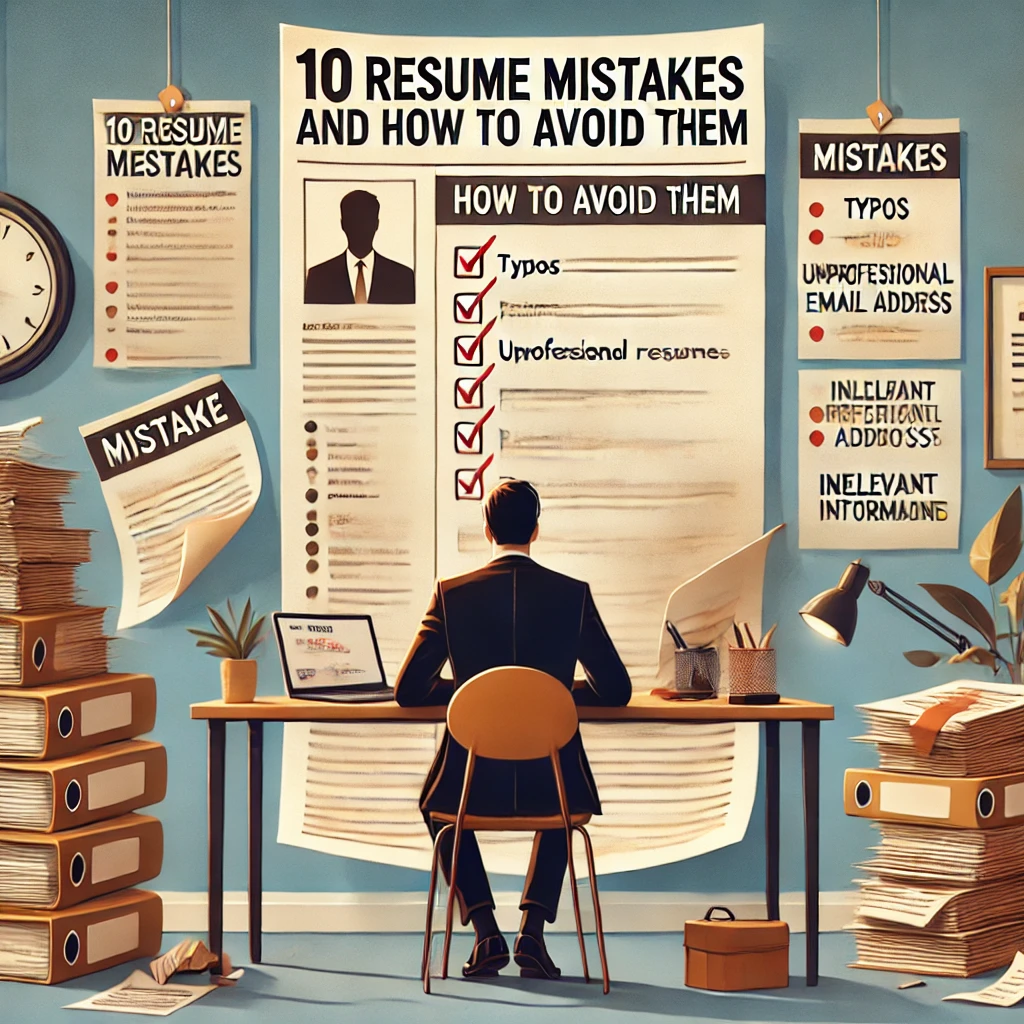
10 Resume Mistakes and How to Avoid Them
Build Your Dream Resume Today!
Stand out from the crowd with our easy-to-use resume builder. Create a professional resume in minutes and land your dream job!
Create Your Resume NowCrafting a resume is challenging, particularly in today’s competitive job market where every detail matters. This guide will help you avoid common pitfalls and create a standout resume that gets noticed. Let’s dive into the top mistakes and how to fix them!
1. Avoid Unprofessional Email Addresses on Your Resume
Your email address is one of the first things employers see. Avoid using casual or outdated addresses like partygirl99@example.com or cooldude123@example.com. Instead, opt for a professional email using your name (e.g., john.doe@gmail.com).
2. Tailor Your Resume for Every Job
A generic resume won’t stand out. Customize it for each application by emphasizing relevant skills and achievements. Learn how to optimize your resume for ATS here.
3. Highlight Achievements, Not Just Responsibilities
Employers care about results. Replace general responsibilities with measurable achievements like "Increased sales by 20%" or "Led a team of 5." Show how you’ve made a tangible impact.
4. Use the Right Resume Format
Choose a clean, readable format with consistent headings and bullet points. Avoid long paragraphs and cluttered designs. Stick to simple fonts like Arial or Calibri.
5. Avoid Information Overload
Your resume should be concise. Focus on key experiences and keep it to one or two pages. Overloading with irrelevant details may distract employers from your main strengths.
6. Optimize Your Resume for ATS
Applicant Tracking Systems (ATS) are commonly used by employers to filter resumes. To ensure your resume passes ATS checks:
- Use keywords from the job posting.
- Avoid images, tables, or complex formatting.
- Save your file as a text-friendly format like PDF.
7. Proofread Thoroughly
Spelling errors or typos can cost you an interview. Use tools like Grammarly or ask a trusted friend to review your resume.
Bonus Tips for an Impressive Resume
- Start bullet points with strong action verbs like "Managed", "Developed", or "Optimized".
- Include a professional summary or objective at the top.
- Use metrics to quantify achievements whenever possible.
Key Takeaways
- Customize your resume for each job application.
- Focus on achievements, not responsibilities.
- Use a clean format and keep it error-free.
- Optimize for ATS to increase your chances of getting noticed.
Build Your Dream Resume Today!
Stand out from the crowd with our easy-to-use resume builder. Create a professional resume in minutes and land your dream job!
Create Your Resume Now